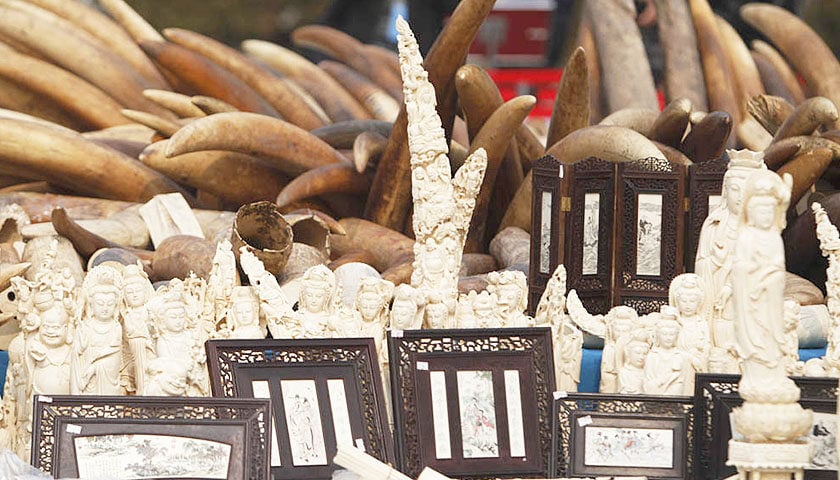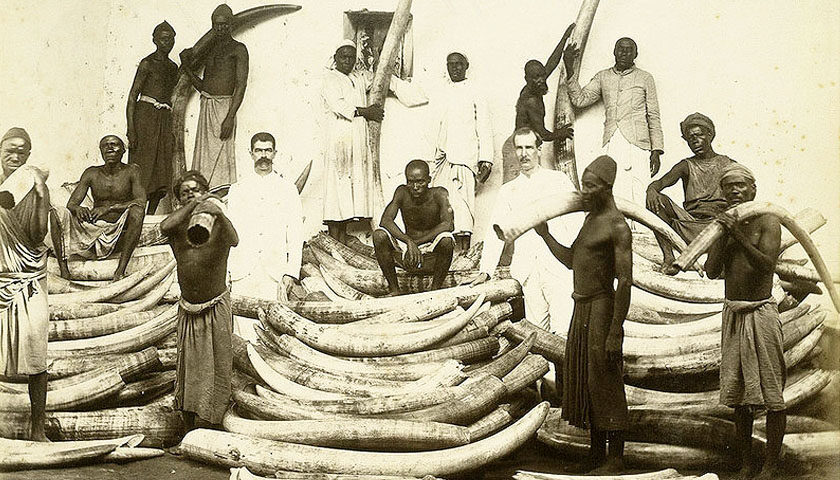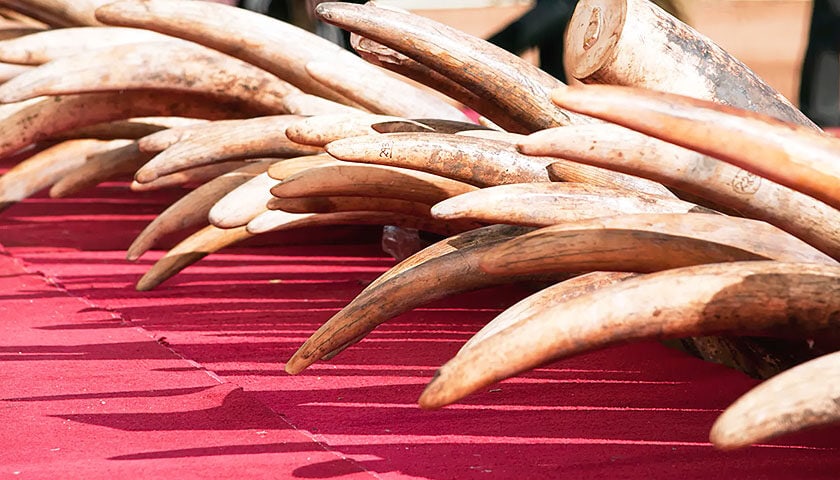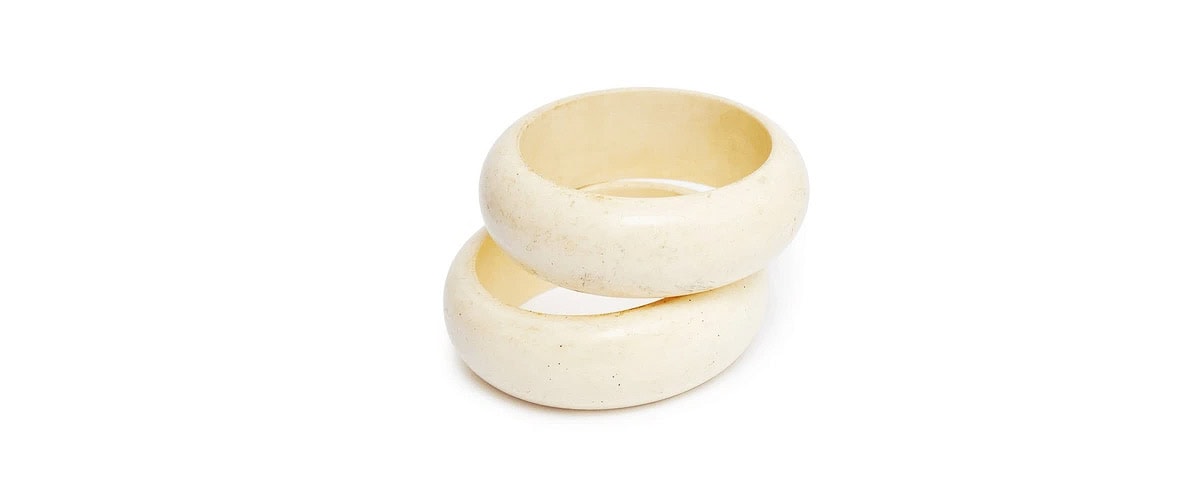Article Highlights
What Exactly is Ivory?
Ivory isn’t just a word you hear in antique shops or historical dramas—it’s a fascinating, natural material with a story as rich as its creamy sheen. At its core (quite literally), ivory is made of dentine, a mineralized collagen. This tough yet smooth substance forms the tusks and teeth of several mammals.
But wait, there’s more! Ivory isn’t exclusive to elephants. It’s also found in the tusks of walruses, narwhals, and even extinct mammoths (cue visions of Ice Age fossils). Fun fact: elk teeth, known as “ivory teeth,” are actually the evolutionary remnants of ancient tusks. Who knew biology could be so chic?
The Natural Marvel of Ivory
Why has ivory been prized for centuries? It’s all about texture and versatility. Natural ivory is smooth, lustrous, and surprisingly durable. These qualities made it perfect for everything from ancient carvings to piano keys. But there’s more to this story than beauty—ivory’s historical uses also highlight humanity’s ingenuity (and sometimes our greed, but let’s stay positive for now).
Ivory has also been a symbol of status and craftsmanship, appearing in art, architecture, and even religious artifacts. It’s like the luxury handbag of the natural world—timeless, but with a complicated past.
The Rise of Ivory’s Cousins: Synthetic and Vegetable Ivory
What if you could get all the beauty of ivory without the guilt? Say hello to synthetic ivory, a modern marvel designed to mimic the real thing. Perfect for industries and artists looking for a more sustainable option, it proves that technology isn’t just about smartphones.
And let’s not forget about vegetable ivory! This eco-friendly alternative is derived from tagua nuts, which grow in South America. Who would’ve thought nuts could hold the key to sustainability? Tagua has a similar texture to ivory, making it a popular material for buttons, jewelry, and more. Plus, harvesting it doesn’t harm any animals—how’s that for a win-win?
From Ancient Empires to Global Icon

How Ivory Shaped the Ancient World
When you think of ancient artifacts, your mind might jump to golden goblets or marble statues. But ivory? Oh, it’s been a silent superstar, quietly shaping civilizations for thousands of years.
Ancient Ivory: Tools, Trinkets, and Timeless Art
In the Indus Valley, one of the world’s earliest civilizations, ivory was a go-to material for tools, ornaments, and intricate carvings. These artisans weren’t just crafting—they were setting the stage for millennia of creative innovation.
Fast forward to Ancient Greece and Rome, where ivory wasn’t just functional—it was divine. Think of stunning religious icons, ceremonial objects, and decorative boxes that whispered luxury. The demand was so high that regional elephant populations paid a steep price (cue the beginnings of ecological impact). Ivory was the marble of the animal kingdom: rare, elegant, and in high demand.
Global Trade and the Ivory Superhighway

By the time global trade routes like the Silk Road emerged, ivory had already secured its spot as a luxury commodity. Traders carried it across continents, offering it as tribute to imperial China, where it adorned palaces and temples. Southeast Asia and Africa were major players, contributing to an ivory trade that wove the world together.
Did you know? Some Southeast Asian kingdoms considered ivory valuable enough to rival gold. And in African kingdoms, it wasn’t just traded—it became a symbol of power and cultural pride.
Ivory’s Cultural Significance: Art, Faith, and Identity
Ivory wasn’t just an artistic medium; it was a cultural storyteller. Across civilizations, artisans used it to create objects imbued with spiritual and cultural meaning.
Southeast Asia’s Sacred Seals
In Buddhist Southeast Asia, ivory seals were more than decorative—they were tools for meditation and devotion. Each seal bore intricate carvings, telling stories of enlightenment and spiritual journeys.
Japan’s Miniature Marvels
Over in Japan, ivory reached its artistic peak with netsuke—tiny, functional carvings used as toggles for traditional garments. During the Meiji era, artists transformed ivory into dazzling pieces of art, blending beauty with practicality. Who says functionality can’t be stylish?
Africa and Beyond: Religious Reverence in Ivory

In Africa, ivory carvings weren’t just about aesthetics; they were deeply tied to cultural identity. In the Philippines, ivory made its way into religious iconography, with intricate carvings of saints that adorned churches and homes. Ivory became a bridge between worlds—faith and artistry intertwined.
Boom, Bust, and the Legacy of Elegance
Colonial Expansion and the Ivory Craze
When Europe began stretching its colonial fingers across the globe, it wasn’t just spices and gold they were after—ivory quickly climbed the ranks of coveted treasures. This wasn’t just a trade; it was a full-blown frenzy.
The Early Modern Era: Ivory Fever Takes Hold
As European empires expanded, ivory found its way into nearly every facet of life. Industrial progress demanded raw materials, and ivory fit the bill perfectly. Durable, beautiful, and versatile, it became a cornerstone of tools, luxury goods, and art.
But let’s not forget who paid the price. African hunters became key players, not always willingly, in a trade network that sprawled across continents. As trade routes expanded, so did the toll on wildlife, with elephants bearing the brunt of humanity’s voracious appetite for luxury.
The 19th and 20th Century: Ivory Meets Industry
When the Industrial Revolution came knocking, it brought new machines—and a new obsession with ivory. Suddenly, the “white gold” wasn’t just for elites; it became a symbol of modern convenience and style.
From Music to Games: Ivory Goes Mainstream
Picture this: Victorian parlors alive with the sound of piano keys—crafted from ivory, of course. In the billiard halls, smooth ivory balls rolled across tables, a testament to the material’s unique blend of strength and beauty. Ivory even found its way into tools and everyday items, proving that elegance could be practical.
Art Deco Dreams
By the time the Art Deco movement took center stage, ivory had cemented its role as an artistic darling. From sleek sculptures to intricate ornaments, it became synonymous with the luxury and modernity of the roaring 1920s. But this demand wasn’t without consequence—elephant populations faced sharp declines as technology made ivory more accessible than ever.
Conservation and Controversy: The Fight for Elephants and Ivory’s Legacy

A Crisis Unfolds: The Decline of Elephant Populations
Ivory may shine in museums and heirlooms, but its story has a darker side. Elephants, the majestic giants of our planet, have been the primary victims of humanity’s love affair with ivory.
The Tragic Numbers Behind the Trade
Poaching isn’t just a crime—it’s a catastrophe. In the last century alone, elephant populations have plummeted at shocking rates. By some estimates, Africa lost nearly 100,000 elephants between 2010 and 2012 due to illegal hunting. These aren’t just numbers; they’re lives, ecosystems, and cultures under siege.
When Giants Disappear, Ecosystems Suffer
Elephants are often called “ecosystem engineers” for a reason. They shape their habitats, knock down trees to create open spaces, and help seed dispersal across vast landscapes. Their decline ripples far beyond their own species, affecting countless plants, animals, and communities that depend on them.
And let’s not forget the cultural loss. For many societies, elephants symbolize wisdom, strength, and spiritual connection. Poaching doesn’t just rob the earth—it chips away at humanity’s soul.
International Bans: A Double-Edged Sword
In 1989, the CITES ban on international ivory trade was hailed as a turning point. Finally, a global effort to protect elephants! But as with many bold moves, the devil is in the details.
The Loopholes That Keep the Trade Alive
Not all ivory is created—or treated—equally. Antique ivory, for example, is often exempt from bans, making it a tricky loophole for traffickers to exploit. Add to this the complexities of regulated sales in some regions, and you have a recipe for confusion and continued exploitation.
While the ban slowed trade significantly, debates rage on. Some argue for tightly controlled, legal ivory markets to curb illegal poaching, while others insist that even limited sales encourage black markets.
Fighting Back: Efforts to End the Ivory Trade
Amidst the devastation, glimmers of hope emerge. Conservationists, governments, and everyday people are uniting to take a stand.
Awareness Campaigns and Symbolic Acts
Who can forget the ivory destruction events, where governments burned or crushed stockpiles of confiscated ivory? These dramatic spectacles sent a clear message: ivory is worth more on an elephant than on a mantelpiece.
Global campaigns, from wildlife documentaries to grassroots initiatives, have worked tirelessly to shift public attitudes. Once seen as a status symbol, ivory now carries a stigma in many parts of the world.
Major Players Join the Fight
China and the U.S., two of the largest ivory markets, made headlines with their joint initiatives to ban the trade. China’s 2017 decision to shut down its domestic ivory market was a game-changer, reducing demand in one of the world’s biggest hotspots for ivory sales.
The Human Factor
Yet, the battle is far from over. Corruption and poverty fuel the poaching crisis, as hunters, often driven by desperation, continue to risk everything. Without addressing the root causes—lack of economic opportunity, weak enforcement, and corruption—the cycle of exploitation is hard to break.
Alternatives to Ivory: Ethical Choices for a Timeless Material
The allure of ivory has enchanted humanity for centuries, but as awareness grows about its impact, alternatives are stepping into the spotlight. From ancient mammoth tusks to cutting-edge synthetics, these substitutes offer the beauty and functionality of ivory without the ethical baggage.
Fossil Ivory: The Echoes of the Ice Age
Imagine this: your next heirloom could come from a creature that roamed the earth tens of thousands of years ago. Fossil ivory, sourced from extinct species like woolly mammoths or ancient walruses, is as intriguing as it is ethical.
Mammoth and Walrus Ivory: A New Lease on Tusks
Fossil ivory avoids the controversy of poaching, but it’s not entirely free of challenges. As permafrost melts, mammoth tusks are uncovered in Siberia and Alaska, feeding a niche market for artisans and collectors. It’s a cool solution—literally!
However, concerns about transparency linger. How do we ensure that mammoth ivory isn’t used as a cover for illegal elephant ivory? Better regulation is key to keeping this alternative clean.
Elk Teeth and Tagua Nuts: Nature’s Ingenious Substitutes
Why look to exotic tusks when elk teeth and tagua nuts are hiding in plain sight? These options prove that sustainability and beauty can go hand in hand.
Elk Teeth: Echoes of Ancestral Elegance
Did you know elk have “ivory” teeth? Once relics of prehistoric tusks, these pearly whites hold cultural significance for Indigenous peoples and hunters. They’re a stunning, eco-friendly way to preserve traditions while reducing reliance on elephant ivory.
Tagua Nuts: Nature’s Vegetable Ivory
Tagua nuts, sometimes called “ivory palms,” are like little miracles from the rainforest. Harvested without harming trees, they harden to resemble true ivory, making them a perfect material for buttons, carvings, and jewelry. Plus, supporting tagua nut farming encourages sustainable land use—a win for people and the planet.
Synthetic Solutions: The Future of Ivory
When science meets creativity, magic happens. Enter synthetic ivory, the tech-driven answer to centuries of ivory dependence.
Advances in Materials Science
Thanks to innovations in materials like polymer resins, modern synthetic ivory can mimic the appearance, texture, and durability of the real thing. It’s used in everything from piano keys to art pieces, offering a cruelty-free path forward.
The Challenges of Adoption
While synthetic ivory checks all the ethical boxes, it faces a unique hurdle: perception. Purists argue that nothing beats the “soul” of natural ivory, while others worry about its high production costs. Changing minds and markets takes time, but as awareness grows, synthetic ivory is likely to cement its place in the future of craftsmanship.
Safeguarding Wildlife and Honoring Traditions
The ivory debate isn’t just about conservation; it’s about culture, ethics, and our collective future. As we strive to protect wildlife, we must also honor artistic traditions, support affected communities, and educate the world. Here’s how we can balance it all.
Balancing Conservation and Cultural Heritage
How do you preserve the soul of ancient craftsmanship while protecting today’s wildlife? It’s a tricky balance, but not impossible.
Preserving Traditions Through Alternatives
Ivory carvings and artifacts tell stories of our shared human history. But here’s the good news: innovative substitutes like tagua nuts and synthetic ivory allow artisans to continue their craft without endangering elephants. By embracing these options, we can ensure that art thrives without exploitation.
Supporting Communities Impacted by Bans
For many communities, the ivory trade has been an economic cornerstone. Bans can hit them hard, creating ripple effects in already vulnerable regions. The solution? Invest in alternative livelihoods like eco-tourism, sustainable farming, or ethical artisan industries. When people thrive, wildlife stands a better chance too.
Strengthening Legislation and Enforcement
Laws without teeth are about as useful as a poacher’s promise. To truly protect elephants, we need airtight legislation and robust enforcement.
Closing Loopholes
While bans like the 1989 CITES agreement were landmark moments, loopholes still exist. Antique ivory markets and dubious exemptions allow the trade to persist in the shadows. Stricter regulations and better tracking systems can help slam these doors shut.
Global Cooperation to Stop Poaching
Poaching isn’t just a local problem; it’s a global crisis. That’s why international partnerships, like those between China and the U.S., are so critical. Sharing intelligence, funding anti-poaching initiatives, and supporting ranger programs can make a massive difference.
Public Awareness and Education
Conservation isn’t just about policies—it’s about people. Changing hearts and minds can have just as much impact as a legal ban.
Changing Perceptions of Ivory’s Value
Ivory has long been a status symbol, but it’s time to flip the script. Instead of valuing it as a material, let’s champion its role in nature—on the tusks of majestic elephants roaming free. Campaigns that highlight this perspective can reshape public opinion and reduce demand.
Advocacy and Grassroots Action
Never underestimate the power of grassroots efforts. Local conservation groups, wildlife ambassadors, and even school programs can spark lasting change. By inspiring the next generation to value wildlife over ivory, we’re planting seeds for a brighter, more compassionate future.



